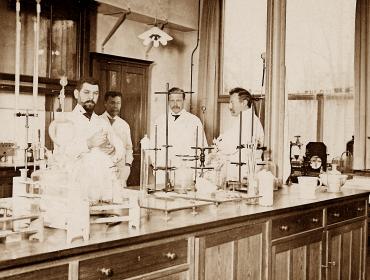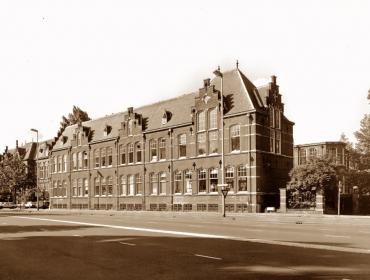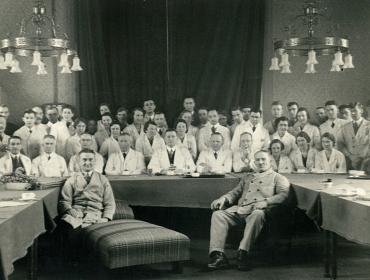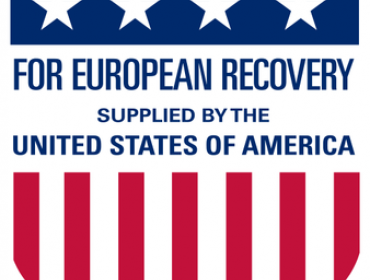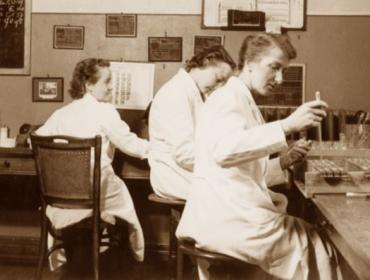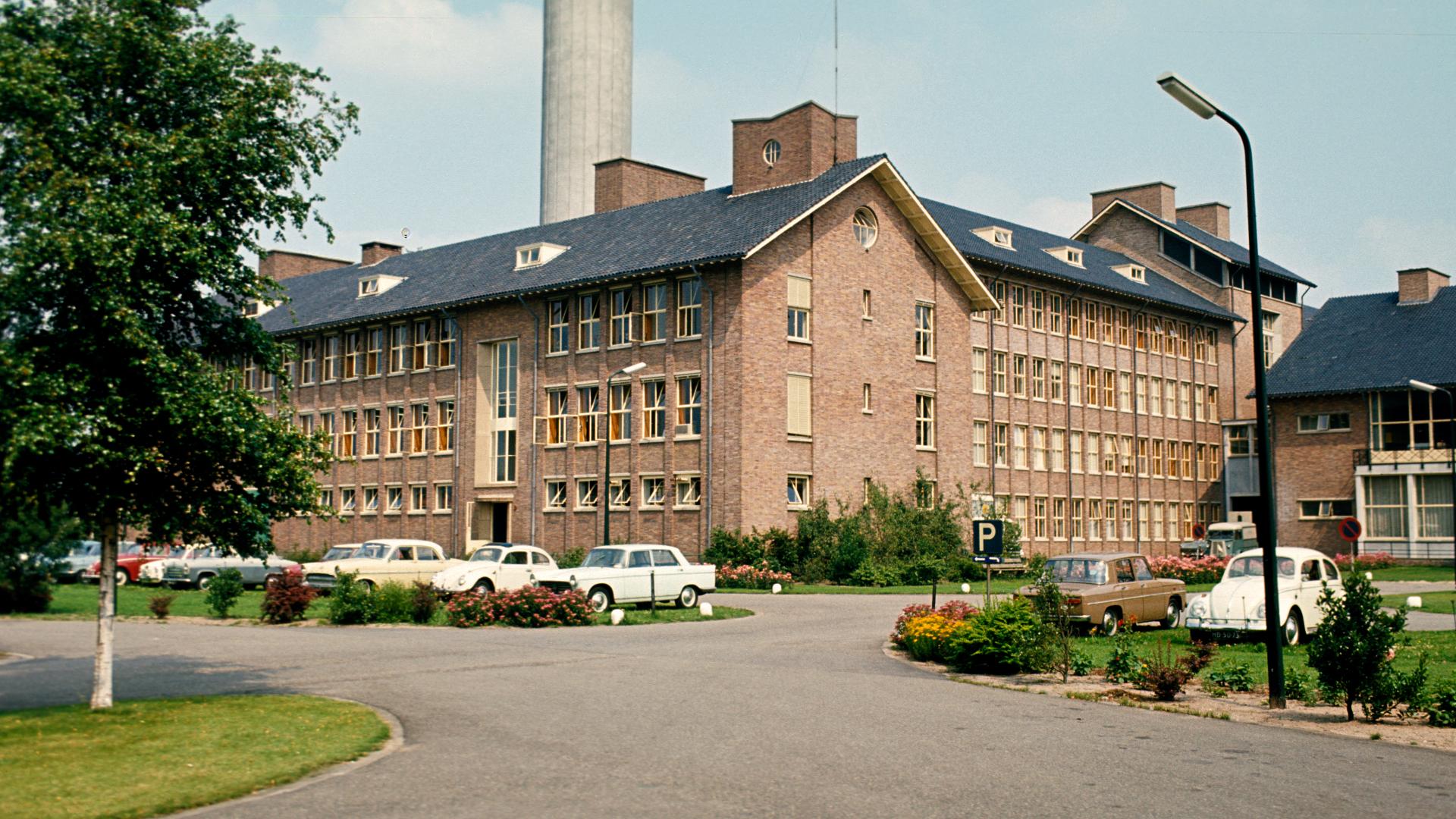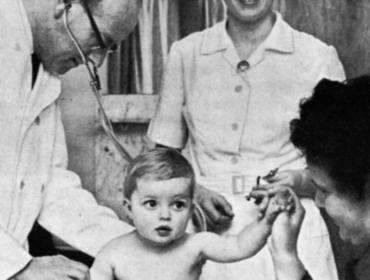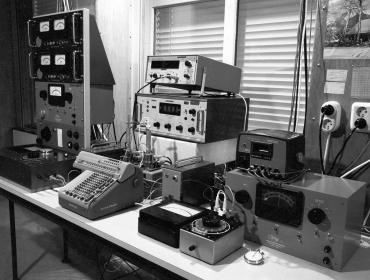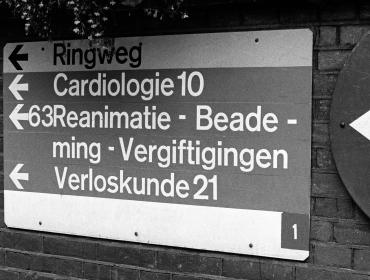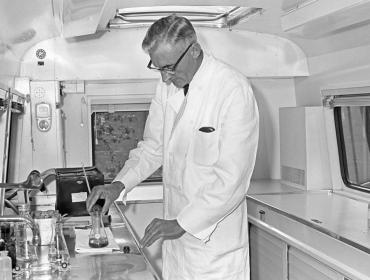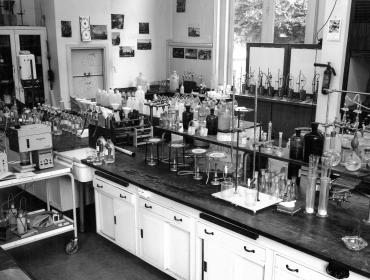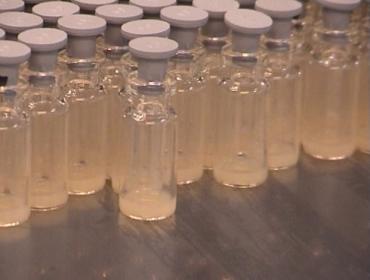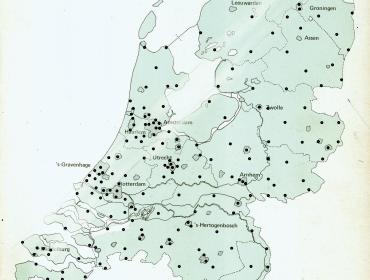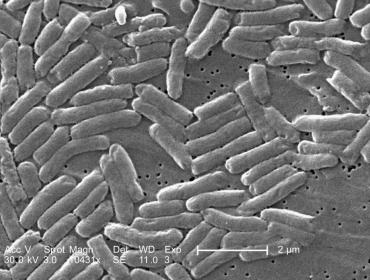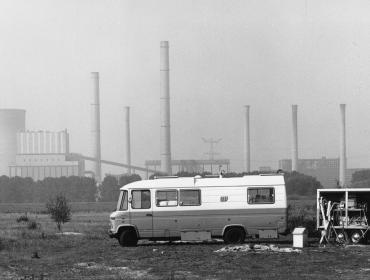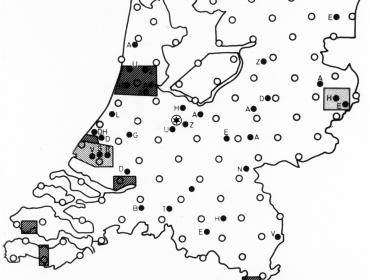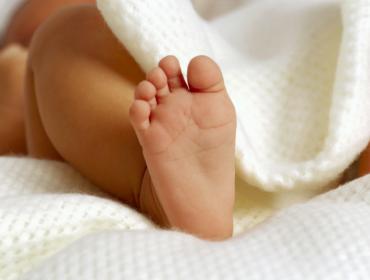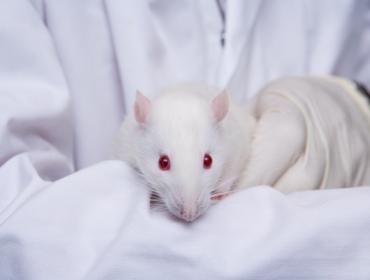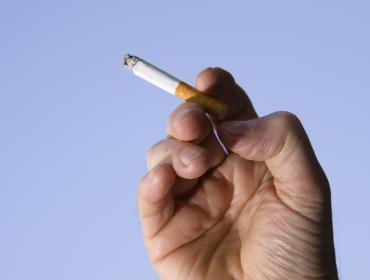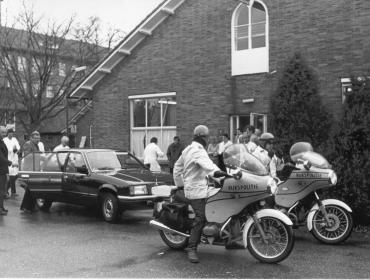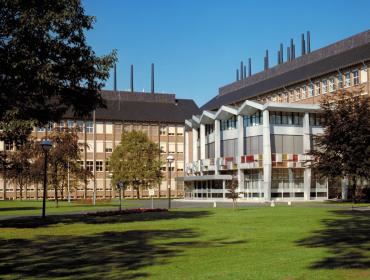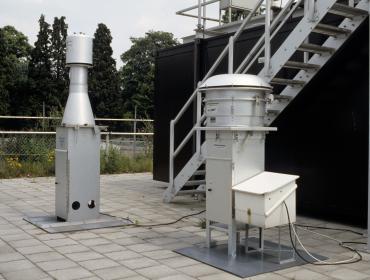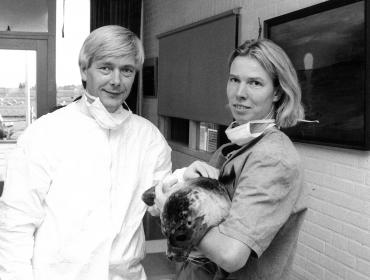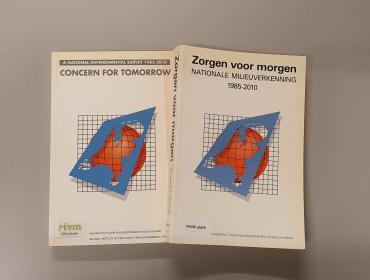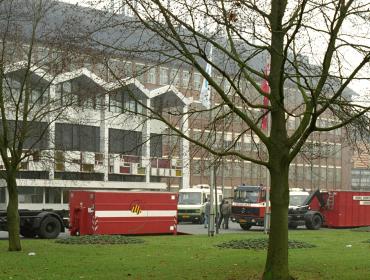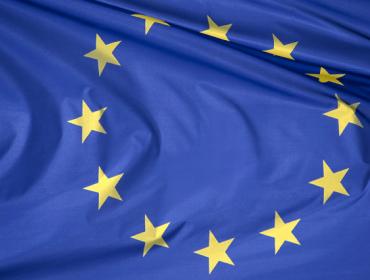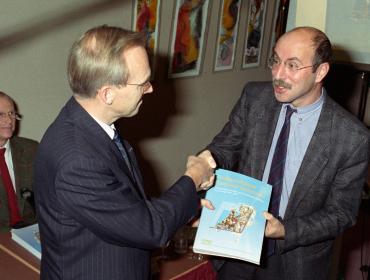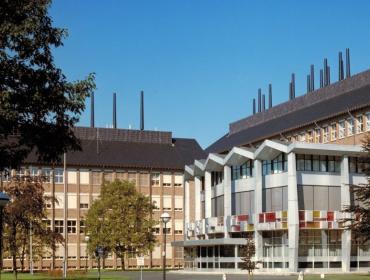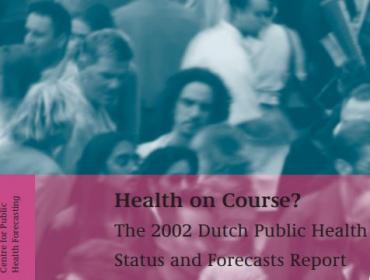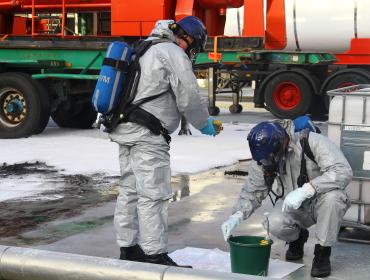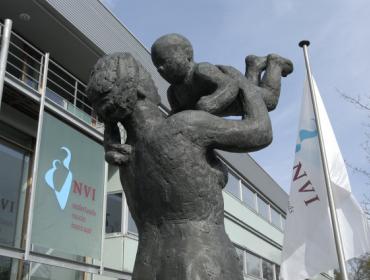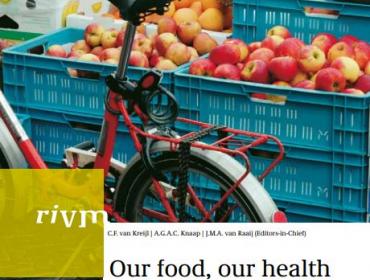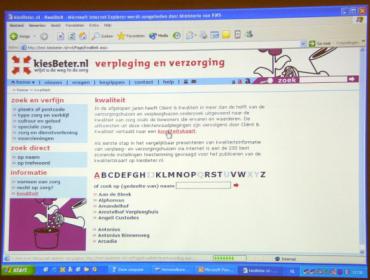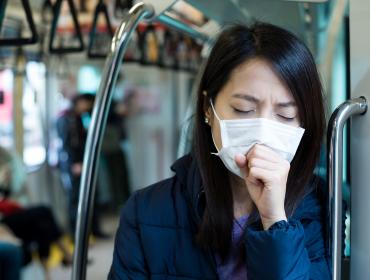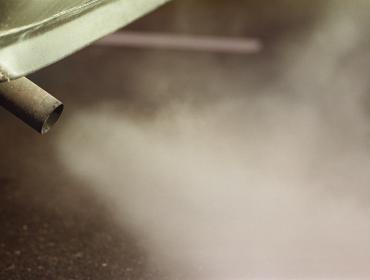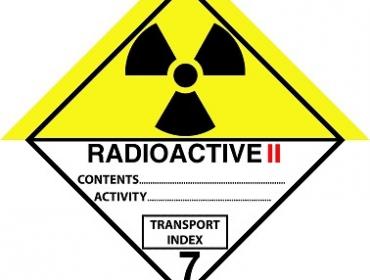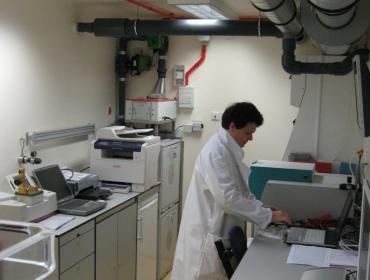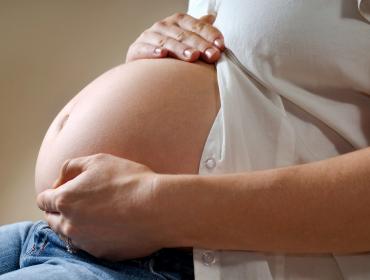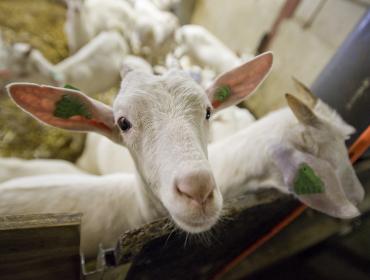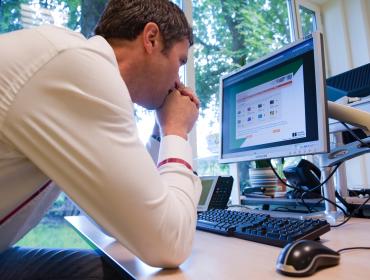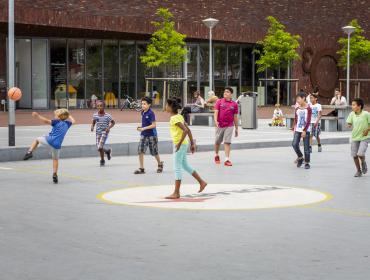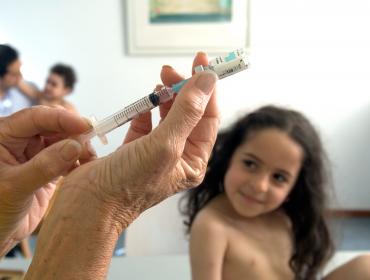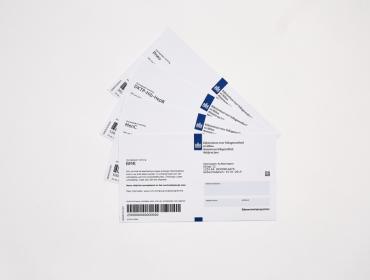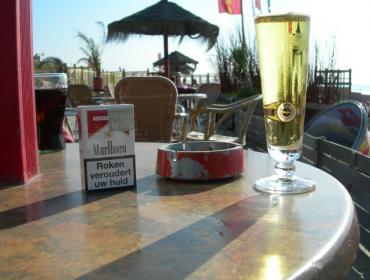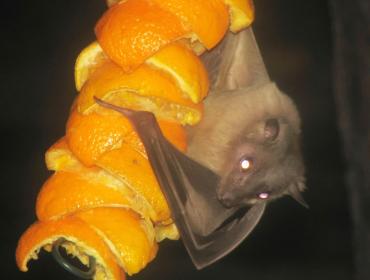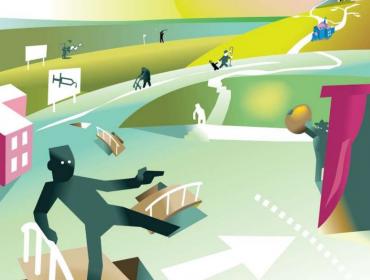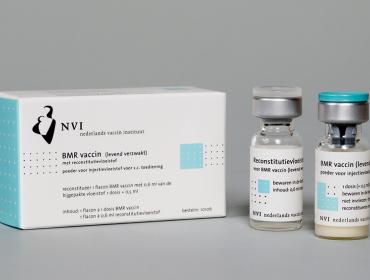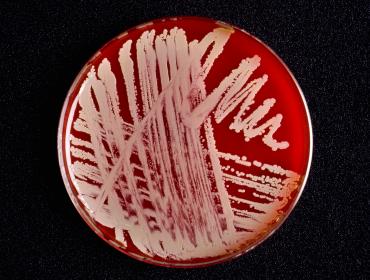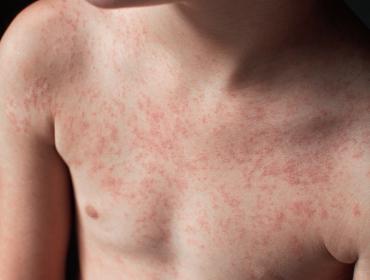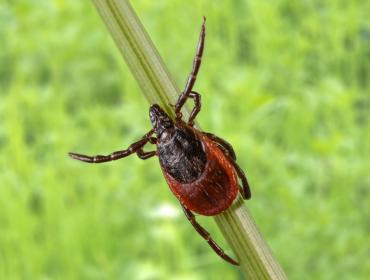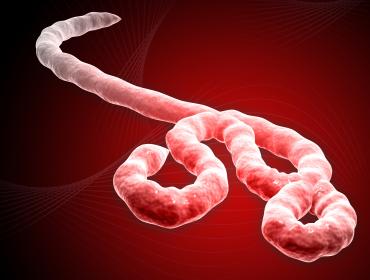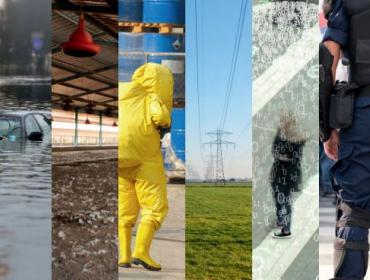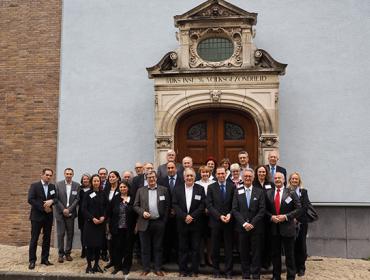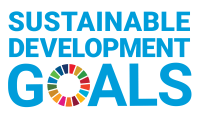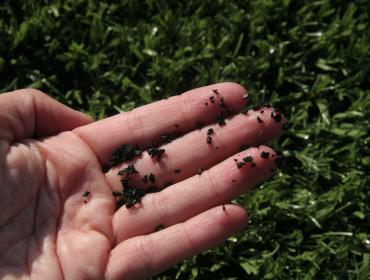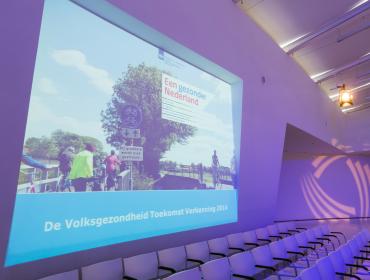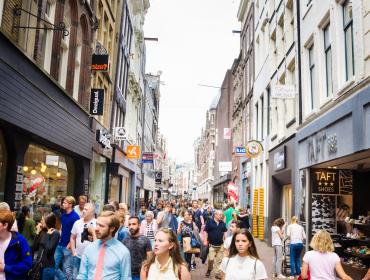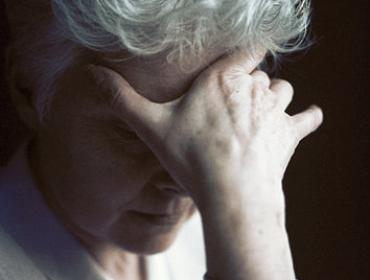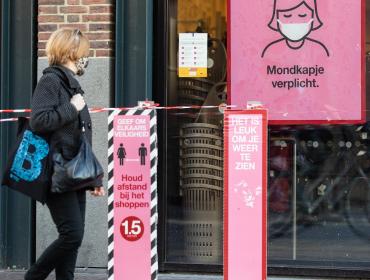In 1909 the organisation that would later develop into RIVM, the Dutch National Institute for Public Health and the Environment, started out as the "Central Laboratory for the State Inspectorate". In 2019 we celebrated an important anniversary: 110 years of RIVM. From the start, we have been promoting public health, incorporating environmental protection along the way. This timeline presents the monumental events that took place during these years.
See also this serie of photos: 110 years of RIVM: day-to-day work
1865
Health Inspectors
The State Health Inspectorate was established and the Dutch government appointed health inspectors. These public officials were known as ‘hygienists’, since their primary focus was better public hygiene. They advocated such measures as better housing, clean drinking water and effective waste removal and disposal.
1909
Central Laboratory established
In the early 20th century, the government acceded to the campaign waged for several decades demanding the establishment of a laboratory for public health in the Netherlands. The ‘Central Laboratory for the State Inspectorate’ opened in 1909 in the Sterrenbos complex, situated on the Catharijnesingel canal in Utrecht. A small group of researchers dedicated themselves to the fight against cholera, diphtheria, tuberculosis, typhoid fever and other serious diseases. Saving lives was their main motivation.
1919
State Serology Institute
The government decided that it would no longer leave the production of serums and vaccines in the hands of private initiatives. The BacterioTherapeutic Institute led by Professor C.H.H. Spronck (Utrecht University) was converted into the State Serology Institute and became part of the Central Laboratory.
1934
National Institute for Public Health
The economic crisis of the 1930s made budget cuts necessary. In 1934, the Central Laboratory merged with the State Serology Institute, becoming the National Institute for Public Health (RIV (National Institute for Public Health)). Working conditions were hard. The institute was understaffed, with far too few researchers to handle the workload, working in cramped spaces. In addition, the demand for its services increased quickly. Many research requests could not be accepted due to insufficient resources.
1940-1950
Difficult circumstances
The National Institute for Public Health worked overtime in an attempt to meet the demand for serums and vaccines. Many ‘wartime studies’ were conducted as well, researching such topics as the nutritional value of flower bulbs, or surrogates for tea and tobacco. It is nearly impossible to offer a complete overview of all the research projects that RIV (National Institute for Public Health) conducted. Among other topics, the researchers focused their efforts on such diseases as cholera, diphtheria, tuberculosis, syphilis and later on the Spanish flu. The laboratory also researched nutrition, medicine and pollution in the water and air.
The institute had a very hard time during World War II. By the end of the war, the National Institute for Public Health was in dire straits, facing severe shortages of everything it needed: money, resources, capacity and space. The Netherlands was hardly able to produce enough serums and vaccines.
1950
Mass production takes hold
Agricultural chemicals and food technology played an increasingly important role in an effort to boost food production worldwide. The industrial emissions resulting from mass production also led to new risks to the environment and to public health.
1950
Aid from the Marshall Plan
The National Institute for Public Health received 3.5 million guilders from the Marshall Plan and expanded its capacity significantly. The aim was to ensure that the Netherlands no longer had to depend on imported vaccines – and that we would be able to manufacture enough serums and vaccines to supply the NATO military forces in the event of a war with the Eastern Bloc.
1951
First Population Screening
The National Institute for Public Health launched the first of a series of population screenings: checking all pregnant women for syphilis. The national screening programme was soon decentralised to a network of regional public health laboratories, which included the laboratory of the National Institute for Public Health.
1953 Relocation to Bilthoven
In 1953, the National Institute for Public Health moved to a new building in Bilthoven. This relocation marked a turning point in our vaccine production. The 1950s and 1960s saw great successes in the development and production of vaccines for various diseases, including polio and smallpox.
1957
National Immunisation Programme
The immunisation programme slowly took shape. A large-scale national vaccination campaign against polio is regarded as the beginning of the National Immunisation Programme. At that time, the programme consisted of immunisations against diphtheria, tetanus polio and whooping cough (pertussis). In the years that followed, the programme was gradually extended to include immunisations against mumps, measles, rubella (German measles), Haemophilus influenza type b, meningococcal disease C, pneumococcal disease, hepatitis B and cervical cancer (HPV).
1958
Radioactivity Department
The National Institute for Public Health opened a Radioactivity Department, which developed into an independent Laboratory for Radiation Research.
1959
National Poisons Information Centre (NVIC) launched
Initially part of the National Institute for Public Health, the centre handled a fast-growing number of requests for information from professionals about agricultural pesticides, household chemicals and medicines. In 2010, the NVIC was transferred from RIVM to the University Medical Centre in Utrecht. The NVIC moved to UMC Utrecht due to the mandate handed down by the Dutch national government to reduce the number of civil servants.
1960 Shift in emphasis and wider range of duties
The increase in prosperity, mass consumption and secularisation of society led to a change in lifestyle throughout Dutch society. There was a growing awareness that industry, farming and pesticides were affecting the environment. As a result, the environment became an increasingly important focus at the National Institute for Public Health. We developed practical policy tools, for example, to help track air and water pollution, and established a solid international reputation in the field of environmental toxicology. See also RIVM's Centre for Safety of Substances and Products and Centre for Environmental Safety and Security.
1962
Laboratory for Food Chemistry established
Important topics included testing for the presence of various chemicals in food, such as aflatoxin, pesticides, N-nitrosamines, the DES hormone and dioxins.
1963
Drug research
With the introduction of mandatory marketing authorisation for medicinal products, the National Institute for Public Health had to expand its drug research. We supported the Medicines Evaluation Board (CBG-MEB) in assessing the quality of biotech medicinal products and overall safety of medicines. Initially, the National Institute for Drug Research (RIGO) assessed the quality of chemical medicines; these activities were transferred to RIVM in 1996.
1969
Global campaign to eradicate smallpox
In 1969, the National Institute for Public Health was designated an “international reference institute for smallpox vaccine control” by the World Health Organization (WHO). The institute produced millions of doses of smallpox vaccine (starting in 1958), making a significant contribution to the WHO smallpox eradication programme.
1969
Monitoring networks established
An upstream chemical spill poisoned the Rhine River with endosulfan, resulting in massive fish die-offs. This pesticide incident and observations of growing air pollution in the Rhine delta region near Rotterdam were contributing factors in the establishment of national and regional monitoring networks.
1971 Walcheren investigation
In 1971, the salmonella epidemic had reached its peak in the Netherlands. The “Walcheren investigation” by RIVM Salmonella Reference Centre, looking into the correlation between salmonella infections in people, animals and the environment, placed our institute firmly in the international spotlight.
1972
Policy Report on the Urgency of Environmental Hygiene
In 1972, the National Institute for Public Health provided an essential contribution to the first Dutch environmental policy plan, the Policy Report on the Urgency of Environmental Hygiene (Urgentienota Milieuhygiëne in Dutch), which established a connection between public health and the environment.
1973
National Air Monitoring Network
Due to the expertise that the National Institute for Public Health already had in automated data processing, our institute was designated a national reference centre for measuring air pollution.
1974
Heel prick screening
This year marked the start of population screening for newborn infants, using blood samples obtained with the heel prick to screen for phenylketonuria (PKU).
1977
National policy on animal testing
As co-founder of the National Committee for the protection of animals used for scientific purposes, the National Institute for Public Health was involved in developing legislation to regulate the use of animals for scientific purposes. See our current information on replacement, reduction and refinement of animal use.
1980
Research on ‘diseases of affluence’
In the Netherlands, the mortality rate due to infectious disease has dropped to about 4 deaths per 100,000 residents. Approximately 220 people per 100,000 residents die from cancer.
From the late 1970s on, the National Institute for Public Health has been conducting research on the major chronic diseases, such as cancer and cardiovascular disease, diabetes, obesity, and how unhealthy lifestyles contribute to those diseases. We also played an important role in large-scale and long-term population screening, such as the cardiovascular disease survey and its successors.
1981
Last samples of smallpox virus
Humankind has been afflicted by the infectious disease smallpox for at least 3,000 years. It was one of the world’s most feared diseases. Smallpox occurred in epidemics and an estimated 300 million people died from it. Those who survived were mutilated for life. A global vaccination campaign (from 1796) ensured that the world could be declared free of smallpox in 1980. It is the only human infectious disease that has been successfully eradicated. Eradication of smallpox is considered the most significant achievement in international public health.
The photo shows the transfer of the final supply of the smallpox virus from the National Institute for Public Health to the Centers for Diseases Control (CDC) in the United States in 1981.
1984 RIVM established
The Council of Ministers decided to cluster all the tasks in the field of public health and environmental hygiene. The National Institute for Public Health (RIV (National Institute for Public Health)), the National Institute for Water Supply (RID) and the Institute for Waste Research (IVA) had been collaborating closely for some time, for example on the Lekkerkerk incident involving severe soil pollution in a residential neighbourhood, and in response to the emergence of EU (European Union) environmental directives. These three institutes merged into the National Institute for Public Health and Environmental Hygiene (later changed to ‘the Environment’): RIVM.
1987
National Air Quality Monitoring Network
The air quality monitoring network had been completely automated. Hundreds of monitors at 48 locations assessed the concentrations of contaminants in the air and in rainwater. The data was sent to RIVM on an hourly basis.
1988
Deadly seal virus in Western Europe
Nearly half of the seal population died off in 1988, and RIVM played a major role in identifying the virus. A field study on the effects of environmental pollution on the immune system of seals contributed to international recognition of immunotoxicology research at RIVM, promoting further development in this field.
1988
First national environmental survey
RIVM took the initiative to launch a national research programme entitled “Global Air Pollution and Climate Change”. In 1988, RIVM published “Concern for Tomorrow: A National Environmental Survey 1985-2010”. The comprehensive report discussed environmental issues worldwide, but also examined these concerns at the national and local levels. This marked our institute’s first steps towards fulfilling its new task in shaping strategic policy.
1990
National Radioactivity Monitoring Network
In the National Emergency Plan for Nuclear Accidents, RIVM was designated national facilitator for the provision of technical information.
1990
WHO European Centre for Environment and Health (ECEH)
The ECEH supports the European process on environment and health, initiated by WHO/Europe in 1989, following the European Charter on Environment and Health. In April 1990, two WHO Centres for Environment and Health were established, one in Rome and one in Bilthoven. The Dutch government's commitment to the European Charter entails the monitoring of health and the environment by RIVM.
1992
European Union formally established (Maastricht Treaty)
With the establishment of the EU (European Union), the European Community was granted additional powers in a number of policy domains.
To support the European Commission, RIVM joined various networks across Europe. Our institute was involved in the establishment and implementation of European laws and regulations, leading to close collaboration with various European institutes. More information on our international work.
1993 Public Health Status and Forecast Report
The institute published the first Public Health Status and Forecast Report, the public health counterpart to Concerns for Tomorrow, the national environmental survey. One of the conclusions we reached was that more effort was needed to prevent chronic diseases. See also Foresight Studies.
1996
RIVM Act
The RIVM Act stipulated that commissioners of research projects would not be allowed to have any influence on how the institute’s work was structured or on the results. Moreover, RIVM was allowed to report about research results independently, separate from its commissioners.
1996
National Institute for Drug Research joined RIVM
The integration of the National Institute for Drug Research (RIGO) represented nearly twice as much work in medicine-related activity for RIVM.
1998
Websites launched
In addition to the launch of www.rivm.nl, RIVM also released various websites providing professionals and citizens with wide-ranging access to structured, substantive information.
Accident and disaster
1998 High-profile plane crash investigation
RIVM was asked to investigate any possible health aspects of the Bijlmer disaster in 1992 when El Al Flight 1862 crashed into high-rise flats in a residential neighbourhood of Amsterdam.
2000 Enschede fireworks disaster
Shortly after the major fireworks explosion in a residential neighbourhood in Enschede, RIVM’s Environmental Incident Service carried out environmental monitoring in the area. In the months that followed the disaster, we coordinated extensive public health screening to assess the impact on the local community.
2002 European comparisons
In its third edition, the Dutch Public Health Status and Forecast Report focused on comparisons with other EU (European Union) countries for the first time. More information on our Foresight Studies.
2002
Expertise on disaster response
RIVM established the National Centre for External Safety and Fireworks. One year later, it was followed by the Centre for Health Impact Assessment, with the aim of providing access to knowledge about health impacts following disasters.
2002
Anthrax scare and ‘powder letters’
In the years after 9-11, the Netherlands had to deal with the scare tactics of powder letters and a growing fear of terrorist attacks. An attack involving the smallpox virus was considered a worst-case scenario. RIVM stockpiled vaccines so we could be able to vaccinate the entire population in case of an emergency.
2003
Transfer of vaccine activities
In 2003, the majority of vaccine activities in the Netherlands were transferred from RIVM to the Netherlands Vaccine Institute (NVI).
2004 Our Food, Our Health
The food we eat is safer than ever before, but Dutch people eat too much and tend to eat the wrong foods. Unhealthy dietary patterns have a major impact on our health, shortening our life span by two years on average. These were some of the key conclusions from the RIVM report ‘Our Food, Our Health: Healthy diet and safe food in the Netherlands’ (originally published as ‘Measuring Dutch Meals’). For the first time in the Netherlands, this report presented a comprehensive overview of all available knowledge in the field of food consumption, food safety and the consequences for public health in the long term. See also healthy, safe and sustainable food.
2005
Increasing scope of tasks and public function
The restructuring of the healthcare sector and the imminent change to the entire health insurance system in the Netherlands led to a broader scope of tasks for RIVM.
In addition to research and advice for government authorities, RIVM also became responsible for taking on central management roles, as well as national coordination of prevention and intervention programmes. Moreover, RIVM was assigned a bigger role in providing information for the public. To that end, our institute launched a site to facilitate the system change in health insurance, designed to help people choose what type of health insurance they wanted: kiesBeter.nl.
RIVM also published the first Dutch Healthcare Performance Report in 2006, the first national report about the quality, availability and costs of healthcare in the Netherlands. From that moment on, the Dutch Health Care Performance Report was published every two years.
2005
Centre for Infectious Disease Control
The Netherlands was hit by a series of epidemics, outbreaks and incidents that started in the 1980s with AIDS, followed by polio, Legionnaires’ disease, ‘mad cow disease’ (BSE), avian influenza and SARS. These health events prompted the establishment of the Centre for Infectious Disease Control.
2005
Fine particles and public debate about the Air Quality Decree
RIVM co-published a review report with the Netherlands Environmental Agency about facts and uncertainties regarding fine particles. Violations of fine particle concentrations occur on a large scale, which jeopardises spatial developments.
2006
Polonium-210
RIVM examined 24 Dutch citizens for possible contamination with polonium-210. These people were staying at the Millennium Hotel in London at the time of the Litvinenko poisoning.
2006
Counterterrorism advice
RIVM presented recommendations to the National Coordinator for Counterterrorism to increase resilience in case of chemical, biological, nuclear and radiological attacks.
2006
Centre for Population Screening
From 1 January 2006 on, RIVM coordinated the national population screenings. The new Centre was one of the clusters within the framework of our new tasks in the field of public health.
2006
Investigation on Q fever
RIVM launched an investigation into the causes of the Q fever outbreak. The epidemic was larger in scope than any other such outbreak worldwide. Indications were that the cause of the disease might be related to goats. Using a series of measures (vaccination, hygiene, etc.), the authorities tried to bring the epidemic to an end.
2007
REACH help desk launched
The government help desk offered support to companies and sector organisations in implementing the European Regulation on Registration, Evaluation, Authorisation and Restriction of Chemicals (REACH). RIVM and SenterNovem were responsible for the joint operation of this help desk.
2007
Counterfeit medicines
The internet was increasingly used as a sales channel for counterfeit medicines and health products. By subjecting the seized products to investigation and testing, RIVM contributed to consumer protection.
2007
RIVM Centre for Healthy Living
With its new Centre for Healthy Living, RIVM focused on encouraging the use of effective lifestyle interventions.
2007 50 years of the National Immunisation Programme
2007 marked the 50th anniversary of the National Immunisation Programme, which achieved 95% immunisation coverage at that point. In that year, the programme protected children against eleven serious infectious diseases.
2008
2008
Vaccination administrations
The vaccination administrations responsible for coordination and implementation of the National Immunisation Programme were integrated into RIVM.
2008
Nano: new information centre launched
The new knowledge and information point on the risks of nanotechnology (KIR-nano) assessed potential risks for four key areas of application: medicine and medical technology, food, consumer products and the environment.
2008
Ban on smoking in cafés and restaurants
RIVM worked closely with the Netherlands Food and Consumer Product Authority to measure air quality in cafés and restaurants before and after the ban on smoking entered into effect. Air quality measurements showed that fine particle were nine times lower than before the ban.
2008
Marburg virus
After a Dutch woman was infected, every possible measure was taken to prevent the further spread of the Marburg virus.
2009 Celebrating 100 Years
Queen Beatrix visits RIVM
RIVM proudly celebrated its centenary in 2009. Our institute celebrated this milestone in the company of Queen Beatrix, who honoured us with a visit on 5 June 2009. She displayed great interest in our work.
Also noteworthy
In close cooperation with numerous other public health organisations and authorities, RIVM coped professionally with the pandemic threat of Mexican flu. Other noteworthy cases were the increasing spread of Q fever, possible health effects of the Corus steel plant in the IJmond region, and the efforts made in respect of lifestyle and health, such as the project called NL de Maat (‘measuring NL’). A characteristic feature of all our work was the importance of a dialogue, as we saw during the campaign for vaccination against cervical cancer. There is a need for dialogue with each other, with our colleagues in the field, and, above all, with the public and society as a whole. More information in our Annual Report 2009.
2010 Confidence in knowledge and expertise
The National Breast Cancer Screening in the Netherlands marked its 20th anniversary in 2010. RIVM published the Fifth Public Health Status and Forecast Report 'Towards better health' and supported the European Chemicals Agency (ECHA) and the Dutch government in the registration of chemical substances (REACH). A volcanic eruption in Iceland casts a cloud of ash over Europe. Readings from the 50 measurement stations of RIVM’s National Air Quality Measurement Network were used to assess the health risks of the ash cloud for the Netherlands. Also, multiresistant bacteria were reported in Europe. More 2010
2012 50th anniversary in radiation research
In 2012 RIVM commemorated that the Laboratory for Radiation Research was established 50 years ago, in 1962. What was then still the Netherlands Institute for Public Health (RIV (National Institute for Public Health)) started radiation monitoring shortly after the signing of the Euratom Treaty in 1957. Among its other provisions, the treaty prescribed that “... each Member State shall set up the facilities necessary for the permanent control of the level of radioactivity in the atmosphere, water and soil...”. See the timeline 50 years of Radiation Research in our annual report 2012.
2012
Electromagnetic fields
RIVM started an investigation into physical symptoms that people attribute to exposure to electromagnetic fields. As part of that study, we launched a website in June 2012 (electromagnetic fields and me) where people could share their stories and experiences.
2012
Measuring fine particle levels with your smartphone
The first iSPEX prototype became available in early 2012. This device can be connected to a smartphone, allowing users to measure the properties of fine particles in the atmosphere. RIVM was one of the partners who developed the iSPEX device, in collaboration with the Netherlands Research School for Astronomy (NOVA), Leiden University, the Royal Netherlands Meteorological Institute (KNMI) and the Netherlands Institute for Space Research (SRON).
2012
Reorganisation of vaccine tasks and establishment of Bilthoven Biologicals
The vaccinology department of the former Netherlands Vaccine Institute (NVI) was incorporated into RIVM as of 1 January 2011. Based on the results of a research project entitled ‘The future of vaccine tasks at RIVM’, it was decided in 2012 to split up the vaccinology department and place part of the activities outside RIVM.
The decision meant that our institute would remain responsible for research and advice regarding the current and possible future vaccines offered by the government. The tasks that were moved outside the scope of RIVM activities were translational vaccine research (linking fundamental research to vaccine development) and technology transfer (conveying knowledge, technology and skills to a wide-ranging group of other users). Bilthoven Biologicals was created following the privatisation of the production activities of the NVI.
2013
AMR
Antimicrobial Resistance: abbreviated AMR. Some bacteria can make us sick. To recover from a bacterial infection, we sometimes need antibiotics. An important disadvantage of antibiotics is that bacteria can stop responding to them (become resistant). RIVM monitors any cases of resistant bacteria, keeps track of all relevant developments in the Netherlands, and advises the Ministry of Health, Welfare and Sport and healthcare professionals. An essential aspect of this priority is to ensure consultation between various parties dealing with antimicrobial resistance. Such consultation takes place via various monitoring and surveillance studies at hospitals, nursing homes and other healthcare institutions.
2013
Measles epidemic
May 2013 saw the emergence of a measles epidemic in the Netherlands that lasted until March 2014. The epidemic mainly spread within areas with low vaccination coverage. These areas have a relatively high concentration of people who belong to conservative Christian Reformed communities. Some of them do not accept vaccinations for religious reasons. The debate about whether or not to get vaccinated received extensively media coverage.
2014
Bowel cancer screening
Population screening for colorectal cancer was launched. Bowel cancer is one of the most common causes of death in the Netherlands. Over 5,000 people died from bowel cancer in 2011, and approximately 13,000 people were diagnosed with bowel cancer. These numbers were expected to increase in the following years. The population screening aims to promote prevention, discovery and early treatment of colorectal cancer.
2014
Tick bite awareness
More than a million ticks bite someone in the Netherlands every year. Two or three of every hundred tick bites will cause Lyme’s disease, and nearly 22,000 people get the disease every year. Lyme’s disease is spread by ticks. In addition to the standard public information materials, including a toolkit, RIVM developed digital materials such as a 5-minute video about ticks, where they occur, and what to do if you have a tick. Our institute also developed an educational computer game to teach children what ticks are and when it’s important to check for tick bites. In 2014, RIVM launched an app (Tekenbeet, or ‘tick bite’) that provides tick removal instructions, shows when and where ticks are most active, and links to the tick radar website and the Lyme’s centre of expertise.
2014 Ebola
The Ebola outbreak in West Africa dominated national and international news in 2014. The risk of the virus reaching the Netherlands was slim, but could also not be excluded. This resulted in extensive media coverage in the Netherlands, as well as questions from citizens and professionals. Under the direction of the RIVM Centre for Infectious Disease Control, many parties, - both within the healthcare sector and beyond -, prepared themselves to take appropriate action if necessary. See also Ebola outbreak in West Africa 2014
2015
Infectious disease and asylum-seekers
In the second half of 2015, people expressed concerns about the possibility of infectious diseases entering the Netherlands as a result of the growing influx of refugees. RIVM answered many questions and also tried to provide nuance to alleviate public fears. The first direct contact with issues involving refugees started in the reception centre for asylum-seekers in Groningen. It was discovered that a rare disease had been transferred there via lice in clothes. It primarily involved people from the Horn of Africa (also known as the Somali Peninsula) who had been closely packed together in cramped spaces during their long travels, giving the lice opportunity to spread. RIVM reported the disease to the European Centre of Disease Prevention and Control (ECDC), to ensure that other countries could quickly recognise the disease and take measures accordingly. Since that incident, the clothes of risk groups have been washed immediately upon arrival in these central reception centres to prevent outbreaks of lice and scabies.
2016
The National Risk Profile: an analysis of national safety and security in the Netherlands
An outbreak of a serious infectious disease, a major natural disaster or terrorist attack could throw society into disarray. However, financial instability or a cyber-attack could also seriously threaten or affect the security interests of the Netherlands. In order to map these and other threats, the National Network of Safety and Security Analysts published the first National Risk Profile in December 2016, which the Minister of Security and Justice then sent to the House of Representatives of the Netherlands. As coordinator of the National Network of Safety and Security Analysts, RIVM has made significant contributions to the National Risk Profile.
2016
Livestock farming and public health
In 2016, the results of a large-scale study into the health effects of the livestock sector in the provinces of Noord Brabant and Limburg were published. The research was conducted by the Interfaculty Research Institute for Veterinary Medicine, Medicine and Science at Utrecht University (IRAS), Wageningen University, the Netherlands Institute for Health Services Research (NIVEL) and RIVM. The study showed some connections between living in the vicinity of livestock farms and effects on public health. Some of those effects are detrimental to health, while others are beneficial, proving how hard it is to give a general answer.
2016
IANPHI EU (European Union) Directors Meeting
On 14 and 15 April, 2016 the directors of European National Public Health Institutes (NPHIs) were present in Bilthoven to share knowledge, discuss topical issues and identify areas where a joint approach could be advantageous. Read more
International RIVM evaluation
"A culture and reputation for scientific excellence, innovative new programs to engage the community and measurable outcomes in improving public health were amongst the key findings of the April 10-13 Peer Evaluation of the National Institute for Public Health and the Environment (RIVM)" - IANPHI 21 April 2016 -Read more
2016
Sustainable Development Goals
On 1 January 2016, the 17 Sustainable Development Goals (SDGs (Sustainable Development Goals)) of the 2030 Agenda for Sustainable Development entered into force. The world leaders committed to achieving the goals of the Paris Climate Change Agreement and the Sustainable Development Goals. Since then, RIVM has been helping the Dutch government accelerate in achieving the global goals by 2030. More on the Sustainable Development Goals and RIVM.
2016-2017 Rubber granulate
RIVM conducted research on possible health risks of rubber granulate. The study was prompted by public concern following a broadcast of Dutch TV show Zembla in 2016. The study concluded that the health risks of playing sports on synthetic turf pitches with rubber granulate infill are virtually negligible. Although rubber granulate does contain hazardous substances, these substances are only released from rubber granulate after ingestion/swallowing, contact with the skin, or through evaporation (in hot weather). More rubber granulate.
2017
RIVM introduced social cost-benefit analyses in investigations in the healthcare domain
The social cost-benefit analysis has been an established research method for quite some time now, for instance in investigating changes in physical infrastructure, such as bridges and roads. An SCBA provides a transparent overview of the pros and cons of policy measures for society as a whole.
RIVM took the first step towards implementing those guidelines in public health and healthcare research with their 2014 Public Health Status and Foresight Study. In 2016, our institute assisted in drafting the first SCBAs for the public health domain and facilitated publication.
2017
In 2017, the Netherlands updated the population screening for cervical cancer
In the past, all samples – sometimes as many as 540,000 – had been subjected to cytology to check for abnormal cells. Responding to advice from the Health Council of the Netherlands, as of 2017 the samples were only checked if they contained the human papillomavirus (HPV) which can cause cervical cancer. Another important change in the new population screening was the introduction of self-collection of samples. Implemented in 2017, the new test for self-collected samples enabled women to collect their own samples and send them in by mail. This ensured that screening would also be available to women who might otherwise not participate because they were reluctant to have their GP do a pap smear.
2017 New building in Utrecht
The Central Government Real Estate Agency commissioned a new building in Utrecht to house RIVM and the Medicines Evaluation Board (CBG-MEB). The new building is slowly rising above the treetops at the Utrecht Science Park; as of 2019, the structure can be seen from the A27 motorway. The new 18-floor building containing offices and laboratories will be completed in 2025, at which point we will be returning to Utrecht, RIVMs city of origin.
2018
New vaccination campaign for teens
Our vaccination campaign to fight meningococcal disease was launched on 1 October 2018. Over the past few years, there has been an increase in meningococcal disease type W in the Netherlands. Before 2015, the disease was infrequent; there were fewer than 10 cases per year, and deaths due to type W were very rare.
2018
Trends: dementia, chronic diseases, and stress for students
In the near future, we will see an increase in life expectancy and live longer, healthier lives, according to the 2018 Dutch Public Health Foresight study, A Healthy Prospect. The study identifies three major challenges for Dutch society: an increase in people with dementia, a significant increase in chronic diseases, and more intense mental pressure on students. The ageing population is obviously directly related to the increase in dementia, but that factor is not the only reason why chronic diseases are becoming more common. As treatments become more and more successful, cancer, cardiovascular disease and other serious illnesses are increasingly becoming chronic conditions to be managed. At the other end of the age spectrum, there has been an increase in perceived mental pressure and busy activity in day-to-day life. For instance, students from secondary school all the way up to university experience more pressure to perform.
2019
Large-scale study on dementia prevention
RIVM is one of ten organisations taking part in the Netherlands Dementia Consortium, a new large-scale study in the Netherlands on “The Path towards Primary Prevention of Dementia”. The massive research project combines data from existing cohort studies in Amsterdam, Doetinchem, Groningen, Leiden, Maastricht, Rotterdam and Utrecht. RIVM will primarily be focusing on connections between lifestyle and cognitive degeneration.
2019
Perceptions of risks and safety
How safe do citizens feel when they live in an area that has a lot of chemical and industrial companies? RIVM developed a questionnaire to survey public perceptions of risks and safety. The questionnaire has been successful in assessing the overall sense of safety, and the answers clearly show which factors are related to perceptions of risks and safety. The results of this study can be used to ensure that communications are tailored more effectively to public perceptions. See also: Perception thermometer pilot: Gauging the feeling of safety under persons living near chemical industry
Looking forward
In 2020, suddenly everything changed due to the coronavirus pandemic. Our knowledge and expertise on infectious disease control, epidemiology, the environment and behaviour is all combined in the fight against COVID-19. This is now even more necessary than before the corona crisis. RIVM is collaborating to come out of the corona crisis as quickly as possible in our organisation and beyond.
RIVM is committed to people living healthy lives in a safe and healthy environment. Now and in the future.

